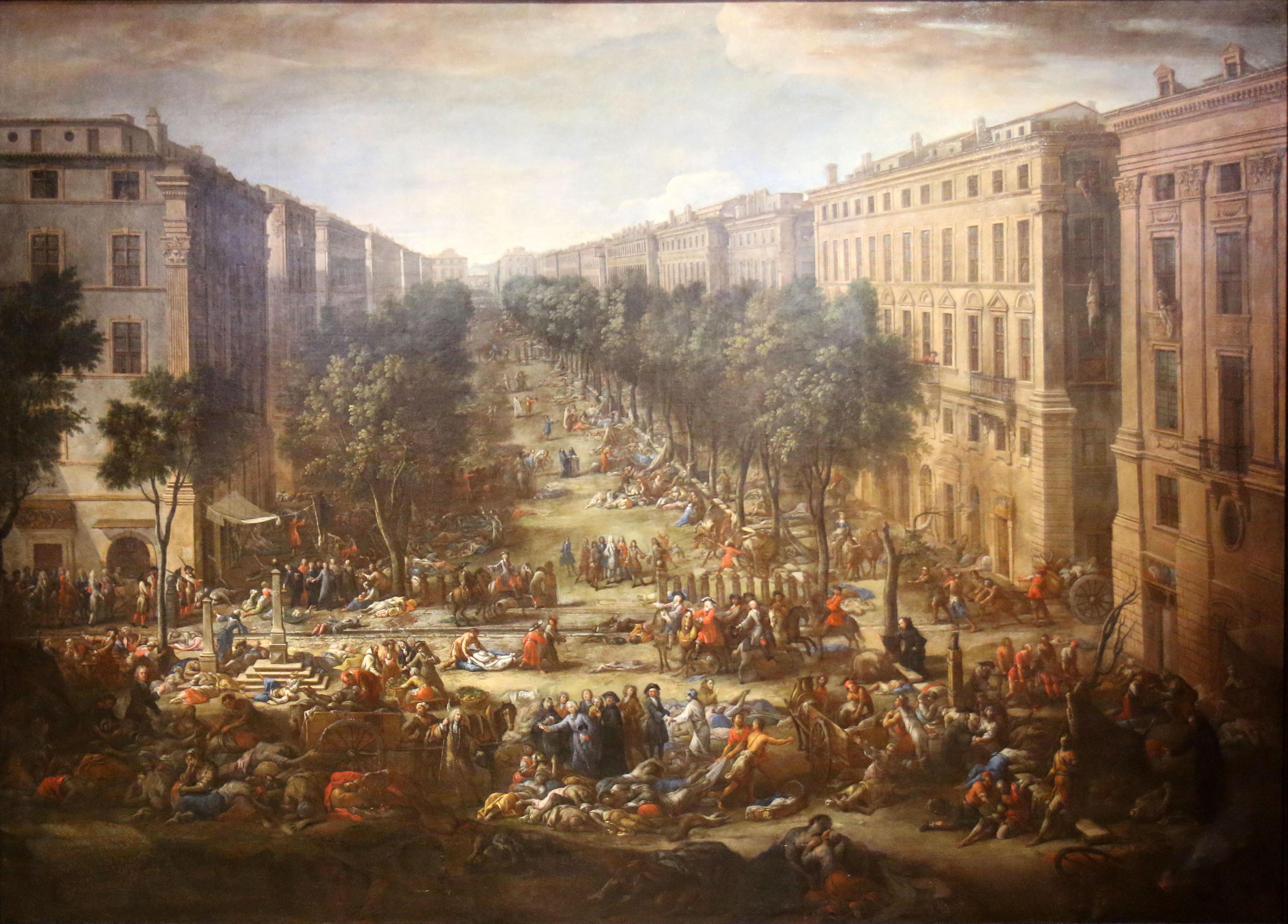|
Belsunce, Marseille
Belsunce (, ; eu, Beltzuntze) is a district near Canebière, central Marseille. Its name was given by Monseigneur Henri François Xavier de Belsunce de Castelmoron Henri François Xavier de Belsunce de Castelmoron (3 December 1671 at the Château de la Force, in Périgord – 4 June 1755 in Marseilles) was a French Jesuit who became Bishop of Marseille. Belsunce is remembered for his tireless efforts t ..., who famously helped during the Great Plague of Marseille. Belsunce is a popular area from the "Centre Bourse" to the big shopping crentre of central Marseille. It includes the famous Alcazar, an old theatre that has been converted into a library. External links *http://www.dailymotion.com/video/xmp105_belsunce-un-quartier-cosmopolite-marseille_creation *http://www.marseilleforum.com/5-quartier-belsunce-noailles-porte-d-aix.htm *http://gmlveb.blogspot.ca/p/visite-du-quartier-de-belsunce.html {{coord, 43.2987, N, 5.3764, E, source:wikidata-and-enwiki-cat-tree_region:FR, ... [...More Info...] [...Related Items...] OR: [Wikipedia] [Google] [Baidu] |
Canebière
La Canebière is a historic high street in the old quarter of Marseille, France. Location About a kilometre long, it runs from the ''Old Port of Marseille'' to the ''Réformés'' quarter.Dana Facaros, Michael Pauls, ''Provence'', New Holland Publishers, 2004, p. 17/ref> It has been called the ''Champs-Élysées of Marseille''. Toponymy The name 'Canebière' ('Canabiera' in Provençal dialect) comes from the word ''Cannabis'' in Latin, as the area around the Old Port were originally hemp fields and Marseille was one of the world's largest trader of hemp baskets and ropes from the Middle Ages until the 1930s, when other fibers were used instead. History The avenue was built in 1666, when King Louis XIV of France (1638–1715) decided to expand the city of Marseille. At the end of the eighteenth century, as the ''Grand Arsenal'' shipbuilding dock was demolished, the avenue was extended down to the Old Port and elegant buildings were built. Only as late as 1928 was it extended from ... [...More Info...] [...Related Items...] OR: [Wikipedia] [Google] [Baidu] |
Marseille
Marseille ( , , ; also spelled in English as Marseilles; oc, Marselha ) is the prefecture of the French department of Bouches-du-Rhône and capital of the Provence-Alpes-Côte d'Azur region. Situated in the camargue region of southern France, it is located on the coast of the Gulf of Lion, part of the Mediterranean Sea, near the mouth of the Rhône river. Its inhabitants are called ''Marseillais''. Marseille is the second most populous city in France, with 870,731 inhabitants in 2019 (Jan. census) over a municipal territory of . Together with its suburbs and exurbs, the Marseille metropolitan area, which extends over , had a population of 1,873,270 at the Jan. 2019 census, the third most populated in France after those of Paris and Lyon. The cities of Marseille, Aix-en-Provence, and 90 suburban municipalities have formed since 2016 the Aix-Marseille-Provence Metropolis, an Indirect election, indirectly elected Métropole, metropolitan authority now in charge of wider metropo ... [...More Info...] [...Related Items...] OR: [Wikipedia] [Google] [Baidu] |
Henri François Xavier De Belsunce De Castelmoron
Henri François Xavier de Belsunce de Castelmoron (3 December 1671 at the Château de la Force, in Périgord – 4 June 1755 in Marseilles) was a French Jesuit who became Bishop of Marseille. Belsunce is remembered for his tireless efforts to relieve the suffering during the Great Plague of Marseille of 1720-21. Early life He was the second son of Armand de Belsunce, Marquis de Castelmoron, and his wife Anne de Caumont de Lausun. His maternal uncle was courtier and soldier Antoine Nompar de Caumont, Duke of Lauzun. His Huguenot parents thought it more advantageous for him to be raised a Catholic.Jonas, Raymond et al.''France and the Cult of the Sacred Heart'', University of Californ ... [...More Info...] [...Related Items...] OR: [Wikipedia] [Google] [Baidu] |
Great Plague Of Marseille
The Great Plague of Marseille was the last major outbreak of bubonic plague in Western Europe. Arriving in Marseille, France, in 1720, the disease killed a total of 100,000 people: 50,000 in the city during the next two years and another 50,000 to the north in surrounding provinces and towns. While economic activity took only a few years to recover, as trade expanded to the West Indies and Latin America, it was not until 1765 that the population returned to its pre-1720 level. Pre-plague city Sanitation board At the end of the plague of 1580, the people at Marseille took some measures to attempt to control the future spread of disease. The city council of Marseille established a sanitation board, whose members were to be drawn from the city council as well as the doctors of the city. The exact founding date of the board is unknown, but its existence is first mentioned in a 1622 text of the Parlement, Parliament of Aix. The newly established sanitation board made a series of reco ... [...More Info...] [...Related Items...] OR: [Wikipedia] [Google] [Baidu] |


